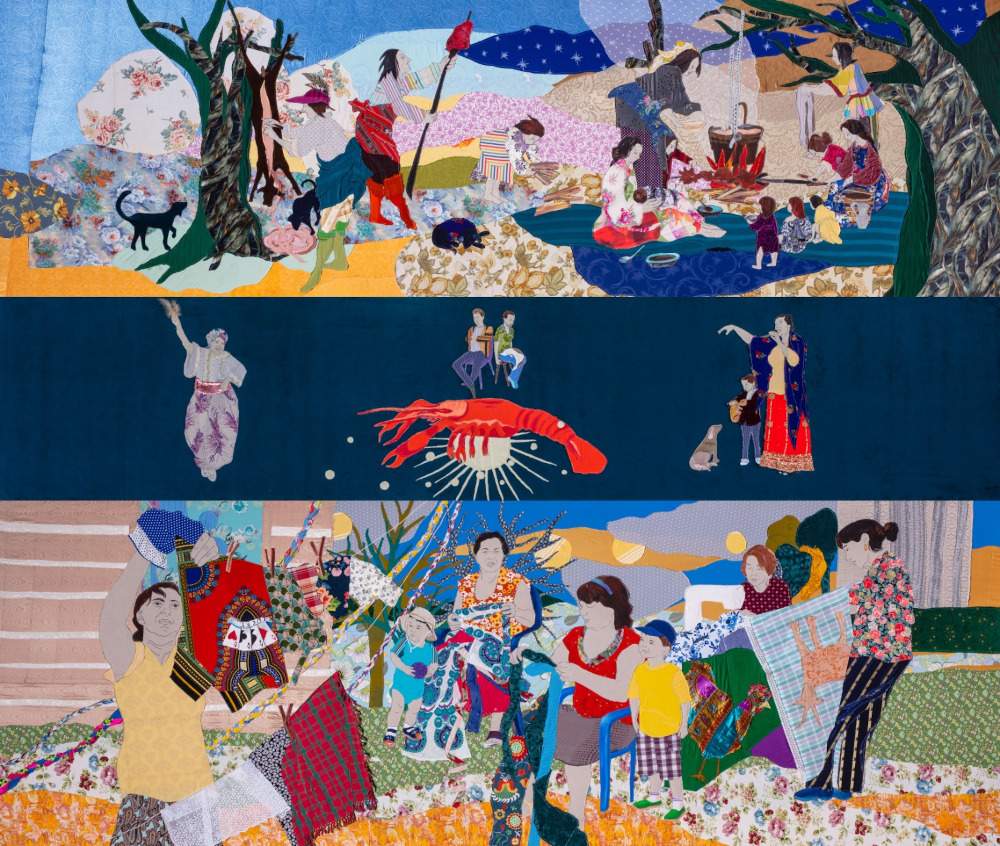From Dec. 18, 2022 to April 10, 2023, Ferrara ’s Castello Estense will host in the Sala degli Stemmi (Hall of Coats of Arms ) the work of Roma-Polish artist Malgorzata Mirga-Tas, entitled Da Schifanoia: re-enchanting the world.
First presented at the 59th. Venice Biennale in the Pavilion of Poland, the exhibition at the Castello Estense, organized by Fondazione Ferrara Arte, Art Museum Service of the Municipality of Ferrara and Zachęta - National Gallery of Art in Warsaw, includes eight of the twelve canvases created by the artist. Mirga-Tas decided to exhibit the March, April, May, June, July, August, September and October: the first seven are the ones still on view at Palazzo Schifanoia.
Although the work has never been exhibited in the city, it is as if the work is returning home: the artist intends to symbolically repay the debt to the city of Este. Indeed, the exhibition takes place where it all began, from the history and monuments that have become the inspiration for his work. Mirga-Tas first visited Ferrara with curators Wojciech SzymaÅ„ski and Joanna Warsza when he was envisioning the installation for the Venice Biennale. During her stay she lingered over the frescoes in Palazzo Schifanoia. She admired the works of great masters such as Francesco del Cossa and Ercole de’ Roberti, discovered the figure of Duke Borso d’Este, patron of the two artists and commissioner of the Salone dei Mesi.
The public will not see in Mirga-Tas installation the same events depicted in the three bands of frescoes in the Salone dei Mesi. In fact, the stories of the Olympian gods, those of the decans, and scenes of courtly life in 15th-century Ferrara have been replaced by episodes narrated by the artist. The upper band depicts the mythical journey of the Roma people to Europe, inspired by a series of 17th-century prints by the Lorraine engraver Jacques Callot. The middle band is an affective archive of Roma stories declined into the feminine, juxtaposing images of real women with magical and astrological elements. The lower one, on the other hand, depicts daily life in the artist’s hometown of Czarna Góra and other Roma settlements in the Tatra Mountains, such as Podhale and Spiš in Poland.
The famous cycle of months in Schifanoia Palace is thus a visual and ideological reference point for Mirga-Tas, who has cast it in Roma-Polish history, culture, and identity.
Photo by Daniel Rumiancew
 |
| From the Venice Biennale to Ferrara: the Mirga-Tas cycle set up in the Castello Estense |
Warning: the translation into English of the original Italian article was created using automatic tools. We undertake to review all articles, but we do not guarantee the total absence of inaccuracies in the translation due to the program. You can find the original by clicking on the ITA button. If you find any mistake,please contact us.